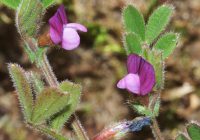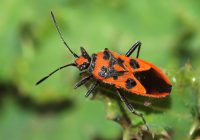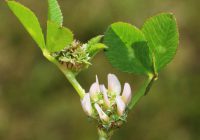Dr Phil Smith’s Wildlife Notes
May 2013
Below average temperatures for most of May contributed to the coldest spring since the early 1960s. This had inevitable impacts on wildlife, almost everything appearing much later than normal. Thus, Hawthorn was only just beginning to bloom by the end of the month, while the many tiny and attractive dune annuals continued flowering much longer than normal. Most of these species are usually over by mid-May. It was a delight, therefore, to be able to enjoy such beauties as Spring Pea and Early Forget-me-not throughout the month.
However, I don’t remember a previous spring with no dragonfly or damselfly sightings in May. Butterflies were also in short supply; I saw only a handful of Orange Tips and Speckled Woods and no Common Blues or Small Coppers. This is worrying as we already know that, nationally, 2012 was the worst year ever for butterflies. The dreadful weather was mostly to blame but there are also long-term declines of many species, as highlighted in a new publication The State of Nature. Analysis of over 3000 British plants and animals shows that 60% have declined over the past 50 years, 31% strongly, those with specialised habitat requirements being affected worse than generalists. Some of the figures are catastrophic; for example, we have lost an estimated 44 million breeding birds since the late 1960s. The report identifies human activity as the main cause of these changes but says little about the measures needed to reverse the trends. Nevertheless, this is an important document that everyone with an interest in wildlife should read.
In September 2012, Patricia Lockwood and I began a study of Hightown sand ridges that were created as part of the mitigation for the 2011 coast protection scheme. They were designed to create open undulating topography in an area of overgrown flat ground that was used as a site compound. Our return visit on 20th May found 15 new plants to add to the 65 identified last year. Also encouraging was the discovery of over 60 nest holes of the nationally rare Vernal Mining Bee on south-facing slopes, while other insects seen included the dramatic red-and-black, mainly southern, bug Corizus hyoscyami and the Sloe or Hairy Shield-bug Dolycoris baccarum. We also re-visited the spectacular colony of Spring Sedge found last year on Freshfield Dune Heath Nature Reserve, counting 5550 flower-spikes, compared with 3320 previously.
Patricia showed me three plants I had not encountered here before. Wicks Lake, Formby Point, produced the superb Summer Snowflake a species considered native only in southern England. Nearby was a large colony of Common Dog–violet, generally a woodland plant that is replaced on the dunes by the Heath Dog–violet. Finally, she found a patch of Field Mouse-ear on the edge of an old asparagus field. This declining species with strikingly white flowers has a mainly eastern distribution.
Another survey at the end of the month targeted the plants of grass-verges along Thornbeck Avenue, Hightown. These are similar to the botanically-rich verges at Kenilworth Road, Ainsdale, having been created from sand-dunes when the housing estate was built in about the 1960s. We were amazed by the diversity of species, particularly the range of dune annuals. One of these, a small clover with purplish-pink flowers, was unfamiliar to both of us. It was soon identified as Clustered Clover (Trifolium glomeratum) a native of southern and south-eastern England, with a few scattered records elsewhere mapped as “alien”. The only previous sighting in north-west England was on a wool-tip near Rochdale in 1971. The mystery is how it got to Hightown.
Several guided walks during the month included two to Altcar Rifle Range where colourful swathes of Green-winged Orchids and Cowslips were a great attraction as usual, as many as 33 people attending the Landscape Partnership visit on 21st. The same day, Red Band Needle Blight was officially confirmed in Sefton Coast woodlands. This serious fungal disease mainly affects Corsican Pine, the dominant conifer here. The effects were clearly evident at Altcar and I also noticed the characteristic reddening of needles at Ravenmeols and Ainsdale. The Forestry Commission has stopped planting Corsican Pine and recommends other plantation owners do the same.
Formby Civic Society organised a well-attended visit to Lunt Meadows on 15th. Despite a freezing wind, Liverpool Museum’s Ron Cowell enthusiastically described the nationally important Mesolithic settlement, showing us various artefacts including stone-tools. There was also time to find some interesting flowers, such as Tall Ramping-fumitory and Medium-flowered Winter-cress, the latter being new to me.




